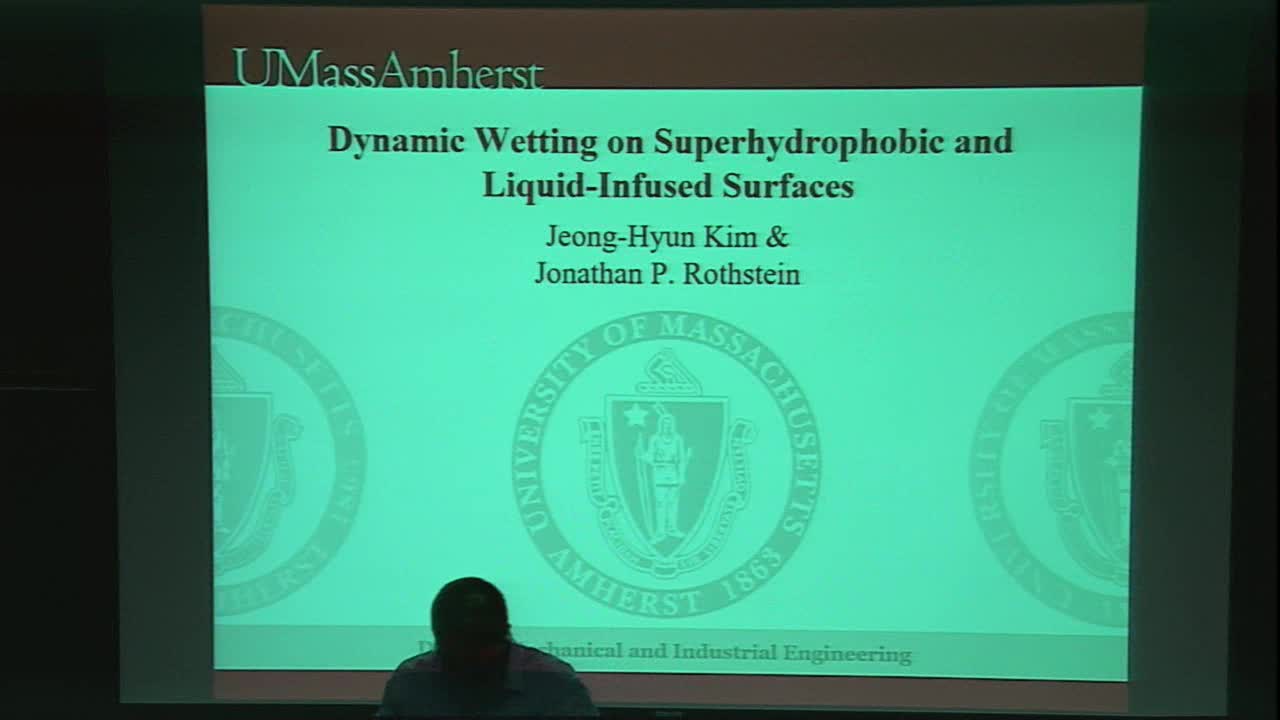Dynamic Contact Angle Measurements on Superhydrophobic and Lubricant Infused Surfaces
Presenter
March 26, 2018
Abstract
In this presentation, measurements of the dynamic contact angles of a series of fluids will be presentedon both superhydrophobic and lubricant-infused surfaces using both a modified Wilhelmy plate experiment and a droplet impact experiments. Solutions of water and an aqueous solutions of low molecular weight polyethylene oxide solutions were studied in order to vary the liquid’s viscosity. The Wilhelmy plates consisted of hydrophilic acrylic, hydrophobic Teflon, and an acrylic surface sprayed with a commercially available paint to make it superhydrophobic. In all cases, the advancing and receding contact angle were measured as a function of plate velocity or droplet spreading velocity and fluid viscosity. The advancing and receding contact angle on smooth hydrophobic Teflon surfaces were found to obey the expected scaling trends with capillary number. Specifically, cos(theta_s) – cos(theta_d) ~ Ca^2/3. The response of the dynamic contact angle on the superhydrophobic and lubricant infused surfaces was quite different. In the case of the superhydrophobic surfaces, the advancing contact angle was not found to change with velocity, but remain constant at theta_a =160 for the superhydrophobic case and less for the lubricant-infused case. More interesting, the receding contact angle on the superhydrophobic surface was found decay with increasing capillary number while obeying a new scaling relation, cos(theta_s,r) – cos(theta_d,r) ~ Ca^2/9. The origins of this new scaling will be discussed. In addition, changing the viscosity of the lubricant-infused surfaces revealed a transition from the expected Ca^2/3 trends for large viscosity lubricants towards the capillary number independent response of the superhydrophobic surface when the viscosity of the lubricant layer was less than that of the aqueous phase wetting the substrate.
